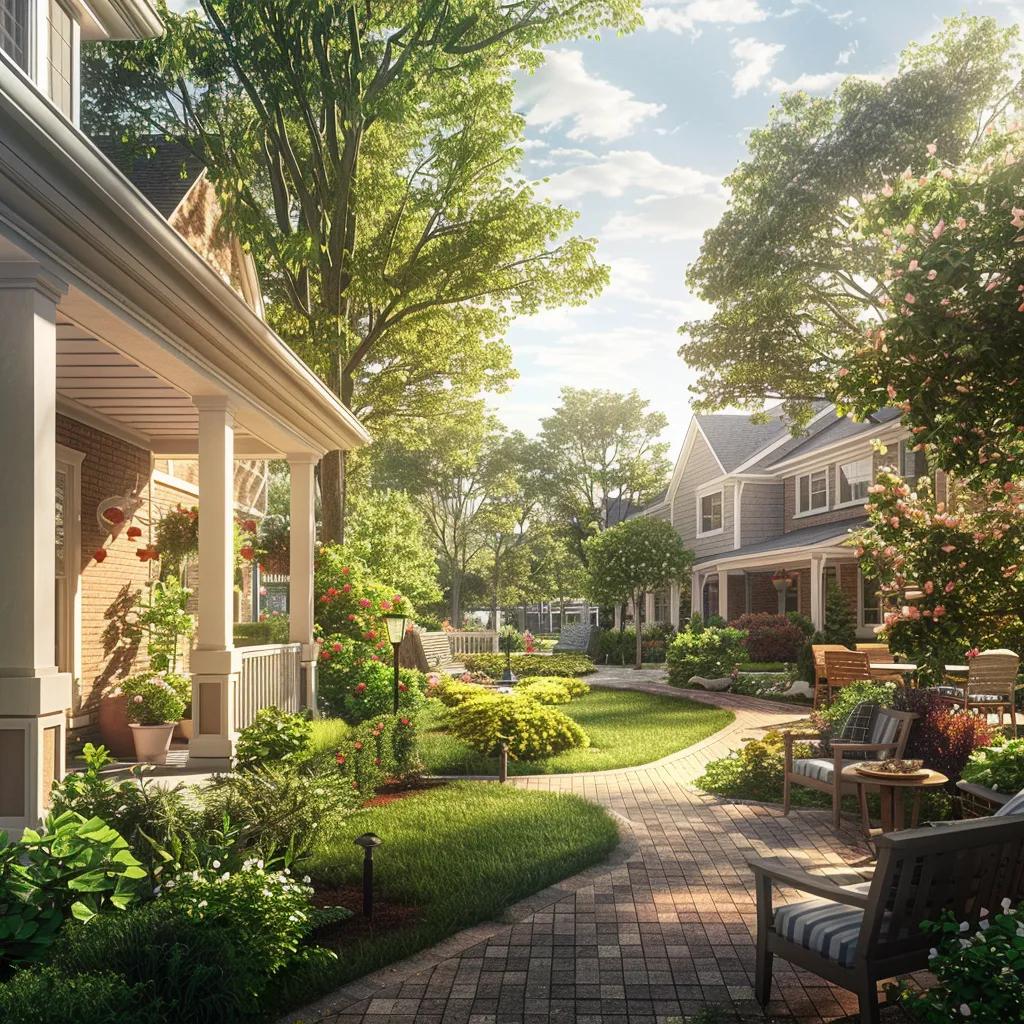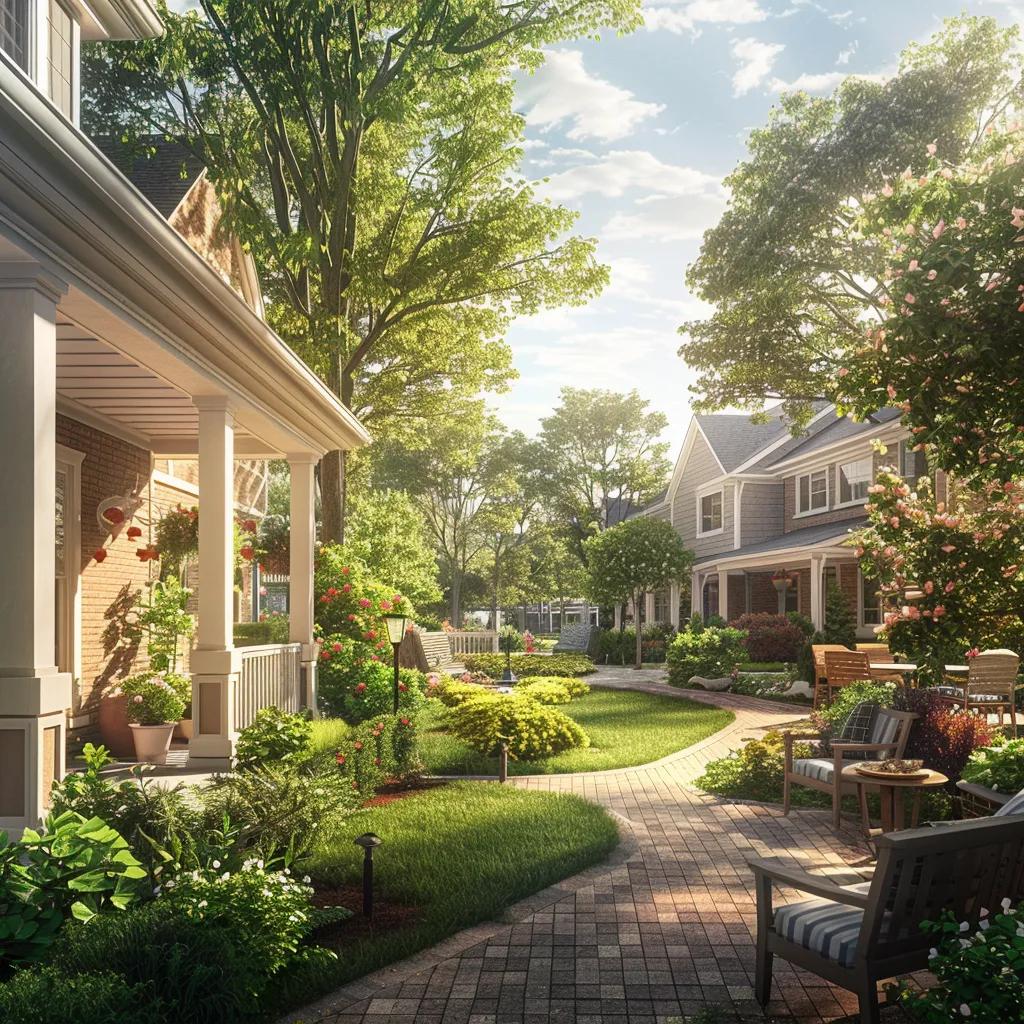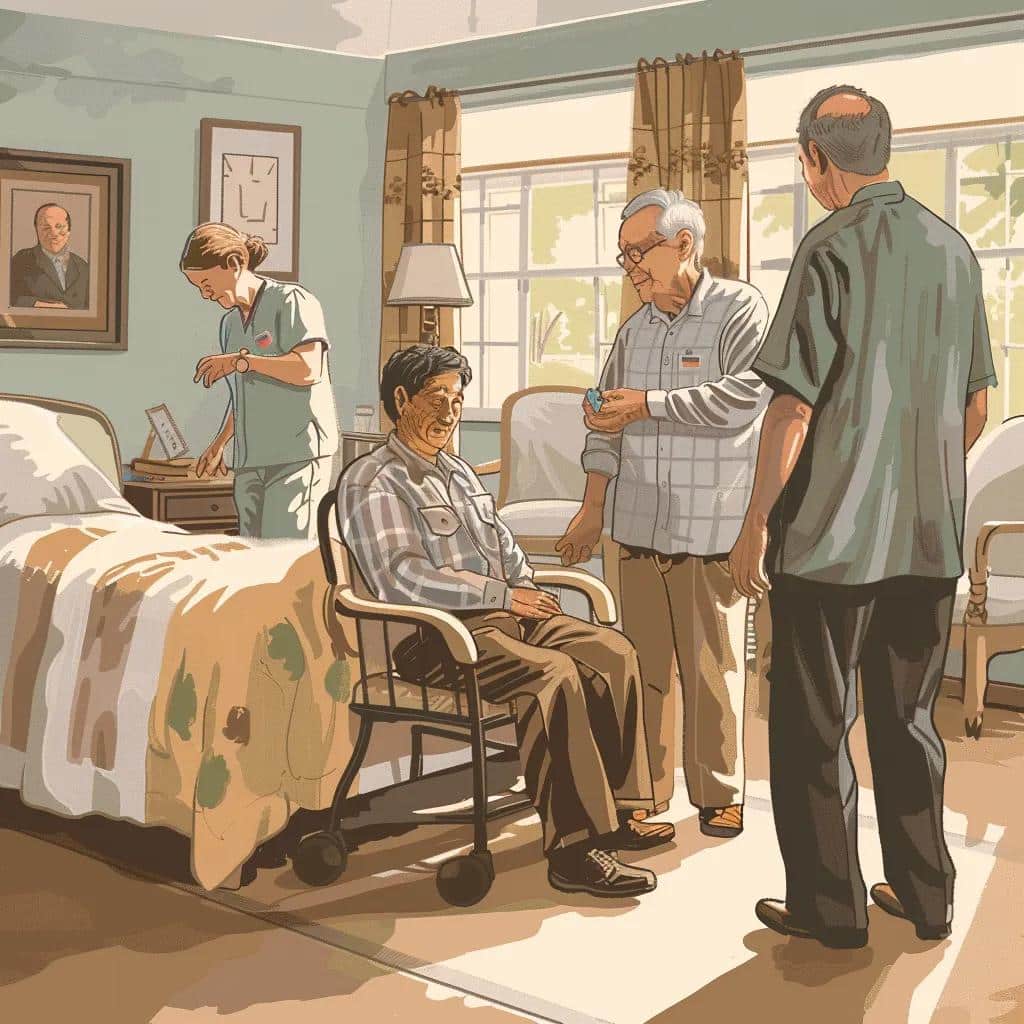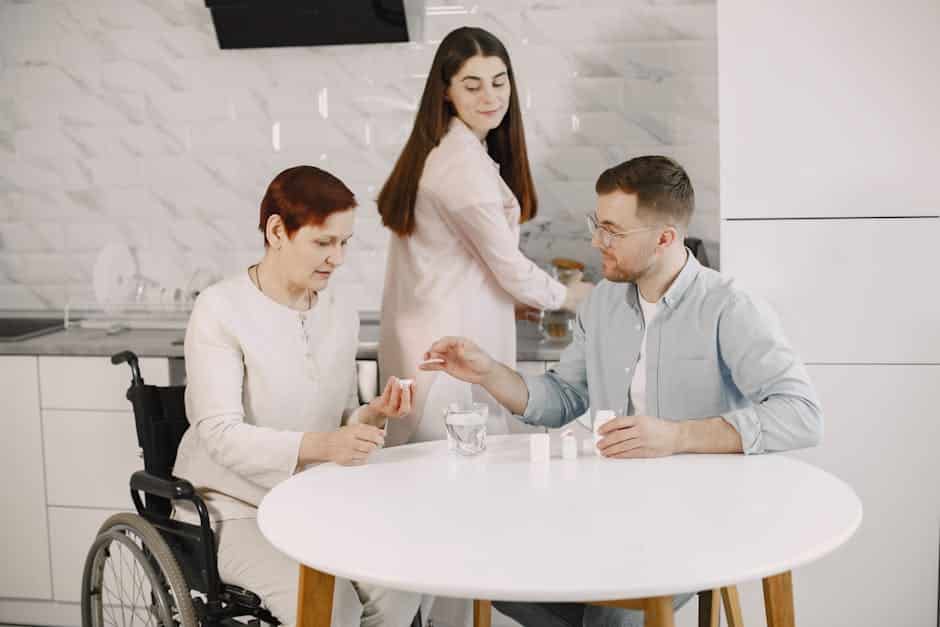Find the perfect assisted living Ypsilanti MI community in 5 simple steps. Explore needs, costs, tours, and make an informed decision today.

Benefits of Choosing Local Assisted Living Communities
Benefits of Choosing Local Assisted Living Communities

Article:
Benefits of Local Memory Care Assisted Living Facilities

A growing number of seniors with dementia benefit from specialized local memory care facilities that combine familiarity, expert attention, and family engagement. By choosing a nearby assisted living community, families gain peace of mind knowing their loved ones receive personalized care in a home-like setting, supported by a high caregiver-to-resident ratio, robust safety measures, and seamless local connections. This article explores four key themes: the comfort of a home-like environment, the impact of a high caregiver-to-resident ratio, family and community support, essential safety and wellness features, plus local advantages in Ypsilanti and Ann Arbor.
What Are the Advantages of a Home-Like Environment in Local Memory Care?
A home-like environment in memory care replicates familiar surroundings to reduce confusion, promoting calmness and emotional stability for seniors with dementia. Memory Lane Home’s six-bedroom ranch houses illustrate how personalized décor and private living spaces foster comfort and belonging.
Home-Like Environment in Memory Care
Replicating familiar surroundings in memory care can reduce confusion and promote emotional stability for seniors with dementia. Personalized décor and private living spaces foster comfort and belonging, which can help residents feel more at ease.
This research supports the article’s emphasis on the importance of a home-like environment in memory care facilities.
How Do Personalized Living Spaces Improve Comfort for Dementia Patients?


Personalized living spaces bring individual memory cues into daily routines, which enhances orientation and reduces agitation. By displaying cherished photographs, favorite furnishings, and meaningful mementos, residents reconnect with personal history. This customization supports reminiscence therapy and encourages independence, as familiar items prompt engagement in everyday activities. Introducing personal items into shared living areas further bridges private comforts with community interaction, strengthening social bonds.
Why Are Small-Scale Memory Care Homes Better for Reducing Anxiety?
Small-scale memory care homes minimize sensory overload by limiting the number of residents per household, which lowers noise levels and foot traffic. In homes with six to ten residents, caregivers can adapt lighting, sound, and activity pacing to individual needs. This controlled environment reduces overstimulation, leading to fewer agitation episodes and improved sleep patterns. Such homes often feel less institutional, so residents experience greater emotional security, laying the groundwork for consistent routines.
How Does Familiarity and Routine Support Seniors with Memory Loss?
Familiar routines anchor daily life for individuals with memory impairment by reinforcing predictable cues and activities. Structured schedules for meals, personal care, and social engagement stimulate cognitive mapping and reduce disorientation. Consistent mealtimes and regular group activities, such as morning tea or garden strolls, foster a sense of purpose and continuity. Over time, this routine-driven approach enhances participation, memory retention, and overall well-being.
How Does a High Caregiver-to-Resident Ratio Enhance Personalized Care?


A high caregiver-to-resident ratio allocates more one-on-one attention, ensuring that each senior’s changing needs are addressed promptly and effectively. At Memory Lane Home, a daytime ratio of 1:5 elevates safety, compassion, and individualized support.
High Caregiver-to-Resident Ratio
A high caregiver-to-resident ratio allows for more one-on-one attention, ensuring that each senior’s changing needs are addressed promptly and effectively. This can lead to better care and improved outcomes for residents.
This research supports the article’s claim that a high caregiver-to-resident ratio enhances personalized care.
What Does an Ideal Caregiver-to-Resident Ratio Look Like in Memory Care?
An ideal caregiver-to-resident ratio maintains safety and responsiveness. In specialized memory care, recommended daytime ratios range from 1:5 to 1:8, while evenings may adjust to 1:8 to 1:10. The table below compares how different staffing models influence resident outcomes:
This ratio framework ensures that Memory Lane Home’s residents receive prompt care, deeper relationships, and enhanced safety compared to conventional staffing structures.
How Does Specialized Dementia Training Improve Caregiver Effectiveness?
Specialized dementia training equips caregivers with skills in redirection therapy, communication techniques, and understanding behavior triggers. By learning to interpret nonverbal cues and apply memory-stimulating activities, caregivers enhance resident cooperation and emotional regulation. Regular in-house workshops and certification programs sharpen these competencies, resulting in improved mood stability and fewer crisis interventions. Continued professional development ensures best practices evolve with emerging dementia research.
What Are the Benefits of Individualized Care Plans for Alzheimer’s Patients?
Individualized care plans define personalized goals, track progress, and specify intervention strategies for each resident’s unique cognitive profile. By assessing medical history, functional ability, and personal preferences, caregivers tailor therapeutic activities, dietary adjustments, and social engagement. This targeted approach reduces behavioral disturbances, maximizes cognitive retention, and elevates quality of life. Quarterly reviews and family consultations keep care plans dynamic and responsive to evolving needs.
Benefits of Personalized Care Plans
Personalized care plans are crucial for effectively addressing the complex needs of individuals living with dementia. Tailoring care strategies to the unique requirements of each patient can significantly enhance the quality of life, emotional well-being, and overall health outcomes.
This research supports the article’s emphasis on the importance of personalized care plans in dementia treatment.
How Do Local Assisted Living Communities Support Families and Caregivers?
Local memory care communities serve as collaborative partners, providing resources, emotional support, and respite to families navigating dementia care.
What Resources and Support Groups Are Available for Dementia Caregivers?
Memory Lane Home coordinates monthly educational workshops, peer-led support circles, and partnerships with the Alzheimer’s Association to deliver expert guidance and stress management tools. Families access caregiver training modules on communication strategies, daily care techniques, and self-care practices. Regional support groups in Ypsilanti and Ann Arbor foster community among caregivers, mitigating isolation and burnout through shared experiences.
How Does Local Community Integration Benefit Residents and Families?
Integrating local community events, such as farmer’s market outings, library programs, and volunteer opportunities, preserves social identity and cultural connections. Off-campus excursions to familiar landmarks reinforce orientation and offer families shared experiences. Collaborations with nearby senior centers and faith-based organizations extend recreational offerings and create multi-generational interactions, enhancing residents’ sense of belonging and community engagement.
What Steps Help Families Navigate the Memory Care Decision Process?
Families typically follow a structured path:
- Research facility options
- Tour preferred homes
- Assess care philosophy and amenities
- Consult healthcare professionals
- Review financial plans
Creating a decision checklist that includes staffing ratios, safety features, daily activities, and proximity to family simplifies comparisons. Involving siblings and trusted advisors in facility visits ensures consensus and alleviates emotional burdens.
What Safety and Wellness Features Are Essential in Local Memory Care Facilities?
Essential safety and wellness features in memory care incorporate advanced monitoring, fall prevention, and cognitive enrichment to foster holistic well-being.
How Do Advanced Safety Measures Protect Seniors with Dementia?
Advanced safety measures such as discreet door alarms, motion-sensor lighting, and GPS-enabled wearable devices prevent wandering, falls, and nighttime disorientation. Secure courtyard access and monitored indoor paths allow safe exploration.
These integrated systems uphold resident autonomy while ensuring continuous oversight and rapid responses to emergencies.
What Types of Engaging Activities Promote Cognitive Stimulation?
Engaging activities structured around personalized interests stimulate memory, creativity, and social interaction. Offerings include:
- Music Therapy Sessions that trigger familiar songs and encourage reminiscence.
- Art and Craft Workshops which foster fine motor skills and self-expression.
- Gardening Clubs that connect seniors with nature and seasonal routines.
Engaging Activities for Cognitive Stimulation
Engaging activities structured around personalized interests stimulate memory, creativity, and social interaction. These activities can reinforce neural pathways and boost mood, contributing to overall well-being.
This research supports the article’s discussion of the benefits of engaging activities in memory care.
These structured programs leverage multisensory engagement to reinforce neural pathways and boost mood.
How Do Holistic Wellness Programs Improve Quality of Life?
Holistic wellness programs combine physical exercise, nutritional guidance, and emotional support to optimize overall health. Yoga or gentle stretching classes maintain mobility, while specialized meal plans ensure balanced nutrition aligned with medical needs. Mindfulness and relaxation techniques reduce stress hormones, contributing to emotional equilibrium. Integrating pet therapy and intergenerational visits further enriches daily experiences.
Why Is Choosing a Local Memory Care Facility in Ypsilanti and Ann Arbor Beneficial?
Selecting a nearby memory care home in Ypsilanti or Ann Arbor streamlines family involvement, maximizes regional resources, and balances value with specialized service.
How Does Proximity to Family and Community Improve Resident Well-Being?
Proximity facilitates frequent visits, reinforcing emotional bonds and reducing feelings of isolation. Short travel times enable impromptu family gatherings and participation in care planning. Familiar community landmarks provide continuity, helping residents navigate and engage with nearby parks, shops, and cultural venues.
What Local Services and Partnerships Enhance Memory Care?
Local partnerships with hospitals, adult day centers, and universities enable multidisciplinary support. Collaborations with Ypsilanti’s healthcare providers streamline medical consultations, while connections to Ann Arbor’s gerontology research programs introduce cutting-edge therapies. Volunteer initiatives link students and community members to social programming, extending staff capacity and diversifying activities.
How Do Local Facilities Compare Cost-Wise to Larger or In-Home Care Options?
Local memory care homes often offer transparent pricing that bundles housing, meals, staffing, and specialized therapies into a single monthly fee. In comparison, private in-home care can incur additional travel and agency fees, while larger national chains may charge premium rates for brand recognition. By evaluating the total cost of care, families can balance quality, predictability, and value in their budgeting decisions.
What Are the Key Benefits of Small Memory Care Facilities Compared to Larger Ones?
Small memory care facilities deliver more personalized attention, stronger social connections, and reduced overstimulation versus larger institutional settings.
How Do Smaller Homes Reduce Overstimulation and Anxiety?
Smaller homes limit the number of daily arrivals and departures, resulting in quieter hallways and fewer visual distractions. This calm atmosphere helps residents maintain focus, experience fewer agitation episodes, and enjoy uninterrupted rest.
Why Do Smaller Facilities Foster Stronger Community Bonds?
With fewer residents, staff and neighbors remember personal histories, celebrate milestones together, and create tight-knit social circles. Shared meals around a single dining table and group activities in intimate spaces build trust and belonging, countering feelings of loneliness common in memory loss.
How Does Personalized Attention Improve Resident Outcomes?
Dedicated staff in small homes learn individual preferences, health changes, and communication styles more quickly. This familiarity speeds detection of mood shifts or medical concerns, enabling timely interventions. Residents thrive as care adapts continuously to evolving needs.
How Can Families Evaluate and Choose the Best Local Memory Care Facility?
Choosing the right facility involves guided tours, targeted questions, and review of authentic experiences to confirm a supportive, expert-led environment.
What Questions Should Families Ask When Touring Memory Care Homes?
- “What is your caregiver-to-resident ratio throughout the day and night?”
- “Can you describe staff dementia training and continuing education?”
- “How do you personalize living spaces and daily activities?”
- “What advanced safety measures are in place to prevent wandering or falls?”
- “How do you involve families in care planning and community events?”
How Do Caregiver Expertise and Facility Features Influence Choice?
Caregiver expertise in dementia-specific therapies, coupled with amenity features such as private rooms, secure outdoor spaces, and cognitive programming, directly impact resident comfort and safety. Observing caregivers interact with residents during a visit highlights communication skills, patience, and empathy—key qualities in memory care.
What Role Do Reviews and Testimonials Play in Selecting a Facility?
Genuine family testimonials and resident success stories offer insight into daily life, responsiveness, and staff dedication. Positive feedback about reduced agitation episodes, meaningful engagement, and transparent communication affirms a facility’s reputation. Conversely, consistent concerns about staffing or safety warrant further investigation.
Memory Lane Home provides in-depth tours, family testimonials, and outcome data from local caregiver networks to support informed decisions, ensuring families choose a caring community aligned with their needs.
Quality memory care facilities close to home blend specialized expertise with personal warmth, empowering seniors with dementia to enjoy meaningful, safe lives while relieving families of constant worry. By prioritizing a home-like environment, high caregiver ratios, community integration, and rigorous safety standards, local assisted living communities in Ypsilanti and Ann Arbor deliver value, comfort, and peace of mind when it matters most.
Frequently Asked Questions
What should families consider when evaluating memory care facilities?
When evaluating memory care facilities, families should consider several key factors. These include the caregiver-to-resident ratio, which impacts the level of personalized attention each resident receives. It’s also important to assess the facility’s safety features, such as secure entrances and fall prevention measures. Families should inquire about the types of activities offered, as engaging programs can significantly enhance residents’ quality of life. Additionally, understanding the staff’s training in dementia care and the facility’s approach to family involvement in care planning is crucial for making an informed decision.
How can families stay involved in their loved one’s care in memory care facilities?
Families can stay involved in their loved one’s care by maintaining open communication with the facility’s staff. Regular visits and participation in community events help reinforce emotional bonds and provide opportunities for family members to engage with caregivers. Many facilities encourage family involvement in care planning meetings, allowing relatives to share insights about their loved one’s preferences and needs. Additionally, families can participate in support groups offered by the facility, which can provide valuable resources and emotional support while fostering a sense of community among caregivers and families.
What types of training do caregivers receive in memory care facilities?
Caregivers in memory care facilities typically undergo specialized training focused on dementia care. This training includes techniques for effective communication, understanding behavioral triggers, and implementing redirection strategies. Caregivers learn to recognize nonverbal cues and how to engage residents in memory-stimulating activities. Many facilities also provide ongoing education through workshops and certification programs to ensure caregivers stay updated on best practices and emerging research in dementia care. This continuous professional development enhances the quality of care provided to residents, promoting better outcomes and emotional well-being.
What role do community partnerships play in enhancing memory care services?
Community partnerships significantly enhance memory care services by providing additional resources and support for residents and their families. Collaborations with local hospitals, adult day centers, and universities can facilitate access to specialized medical care and innovative therapies. These partnerships often lead to organized community events, volunteer opportunities, and intergenerational programs that enrich residents’ lives. By integrating local resources, memory care facilities can offer a more comprehensive approach to care, ensuring that residents benefit from a wide range of services and social interactions that promote well-being.
How do memory care facilities address the unique needs of Alzheimer’s patients?
Memory care facilities address the unique needs of Alzheimer’s patients through individualized care plans tailored to each resident’s cognitive profile. These plans are developed based on assessments of medical history, functional abilities, and personal preferences. Caregivers implement targeted therapeutic activities, dietary adjustments, and social engagement strategies to enhance cognitive retention and reduce behavioral disturbances. Regular reviews of these care plans ensure they remain responsive to the evolving needs of residents. Additionally, staff training in Alzheimer’s-specific care techniques helps improve the overall quality of life for residents living with this condition.
What are the benefits of engaging activities in memory care facilities?
Engaging activities in memory care facilities provide numerous benefits for residents, including cognitive stimulation, social interaction, and emotional well-being. Activities such as music therapy, art workshops, and gardening clubs are designed to resonate with residents’ personal interests, promoting memory recall and creativity. These structured programs help reinforce neural pathways, boost mood, and reduce feelings of isolation. By fostering a sense of purpose and community, engaging activities contribute to a higher quality of life for residents, encouraging them to participate actively in their daily routines and interactions.
Conclusion
Choosing a local memory care facility in Ypsilanti or Ann Arbor offers families peace of mind through personalized care, community integration, and enhanced safety features. These specialized environments not only foster emotional well-being but also promote cognitive engagement for seniors with dementia. By prioritizing a home-like atmosphere and high caregiver-to-resident ratios, families can ensure their loved ones receive the best possible support. Discover the local options available to you and take the next step towards securing a nurturing environment for your loved one today.


